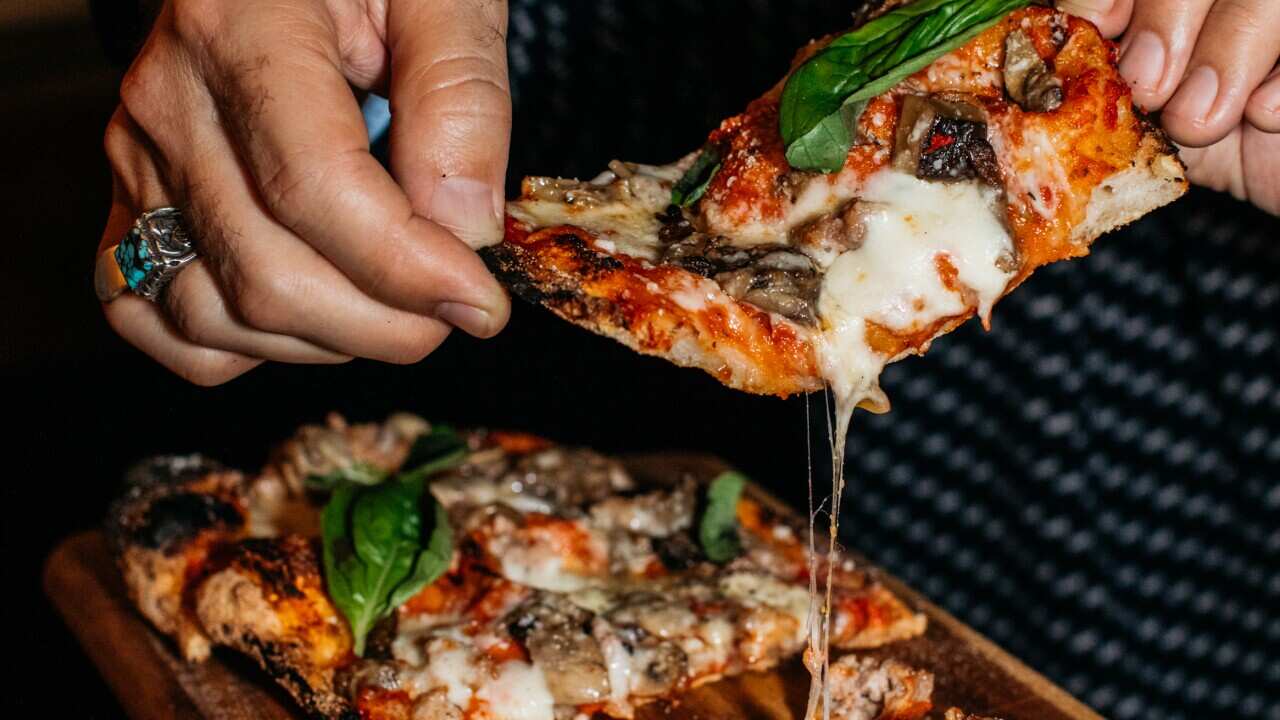What is pinsa? It's a question that plenty of people ask when visiting in Sydney's Newtown.
"It's from Rome, but now you can find it pretty much in all of Italy," says Valerio Boncompagni, the restaurant's chef and co-owner. "There's a big boom in Italy, but not here in Australia," he adds. "This is going to be the pizza of the future."
So how does it compare to the Naples kind, which is soft with a floppy dough? Or the thin, crunchy Roman type, sold in squares by the tray?
"The pinsa is a combination of the two styles. It's really fluffy on the top, but really crunchy on the bottom," he explains. Boncompagni learnt how to make this several years ago from a friend in , a picturesque square in Rome.
At Casa Mia Osteria, the pinsa dough is left to ferment for three days. It also has a distinct quality thanks to its mix of three different flours: soy flour (which keeps it light and easy to hydrate), rice flour (which makes it crusty: "the Chinese use rice flour when they fry stuff to make things more crunchy," the chef points out) and tipo 0, which is a rough and robust white flour – much stronger than finely ground tipo 00 people associate with pizza dough. He adds a lot of water to the mix, too. "That's why the pizza is really light. It's light like a cloud," he says.
The pizza is really light. It's light like a cloud.
Unlike a Naples-style pizza, which crisps and cooks within 90 rapid seconds in a wood-fired oven, Boncompagni double cooks his pinsa dough for five minutes at a lower temperature. First, he slips in the base and lets it bubble and get crusty as the moisture evaporates from the dough. Then he removes it, piles on the ingredients – like fried eggplant, a spread of tomatoes, mozzarella and a Parmesan fondue (for the restaurant's popular eggplant parmigiana pinsa, for instance) – and puts the pizza back into the oven dome, so the cheese can liquefy and the other flavours soften and melt under the intensifying heat.
If you've heard of pinsa, you've likely read about its mythical origins, which supposedly date back to ancient Rome. The tale goes that priests used to offer this pizza to the gods and, circa 19BC, Roman poet Virgil even wrote about it in , his epic poem. makes reference to the particular passage recalling the Trojan refugees who ate a plate-like bread that resembles today's pinsa. The name comes from the Latin word pinsère, which indicates that the dough is pressed, rather than stretched.
"No, this is the story that they invented to make pinsa popular," says Boncompagni. "It was a story invented by , the man that actually invented the pinsa and had the original recipe. He just invented this to make pinsa famous, to say, 'pinsa actually came from Latin, so it's really an ancient style of pizza'. But it's actually only born in 2001."
People say I've never seen twice-baked pizza, but this is the proper way to do the pinsa.
As he debunks this myth, Casa Mia Osteria's co-owner Andrea Nazzari joins in. "Never trust Italians!" he says and laughs. It's a tongue-in-cheek joke, since Nazarri is from Milan and Boncompagni is from Rome.
So it's true, pinsa was actually invented 20 years ago. Italy24 News that Di Marco recently confessed to making up its origins. Yes, there was an ancient Roman bread that could be considered an early pizza prototype – but some consider it a stretch to claim it was pinsa.
Although pinsa's lighter, airier, more easily digestible creation has become "really popular in Italy", says Boncompagni, it's pretty rare to find it on an Italian menu in Australia. But Nazarri and Boncompagni are keen to showcase the lesser-known staples from their homeland, as well as their remixes of regional Italian classics. "We try to give people something they've never tried before," says the chef, whose menu includes salty doughnuts with mortadella mousse and pistachio, plus dishes that merge Milanese and Roman influences (like a pig's head terrine, typical of Rome, but done in a fried-breadcrumb style, like ).
Their approach is really personal. "That's why our restaurant is called Casa Mia – 'casa mia' means my home," says the chef. Nazarri says that's the atmosphere they're aiming for, even if the traditional touches mean incorporating less familiar dishes.
"People say I've never seen twice-baked pizza," adds Boncompagni, "but this is the proper way to do the pinsa."
Casa Mia Osteria
9/605 King Street, Newtown NSW
9/605 King Street, Newtown NSW
Wed–Thurs: 5pm–9.30 pm
Fri–Sat: midday-9.30 pm
Sun: midday-9 pm
ITALIAN DELIGHTS

The key to making a frisella, a southern Italian open sandwich







